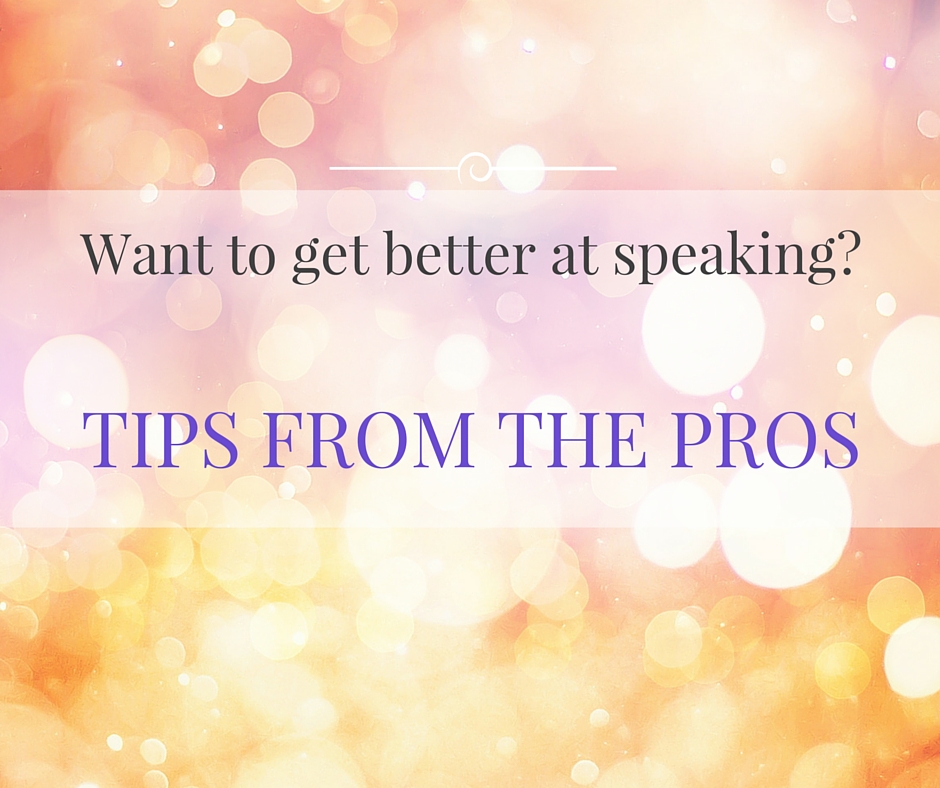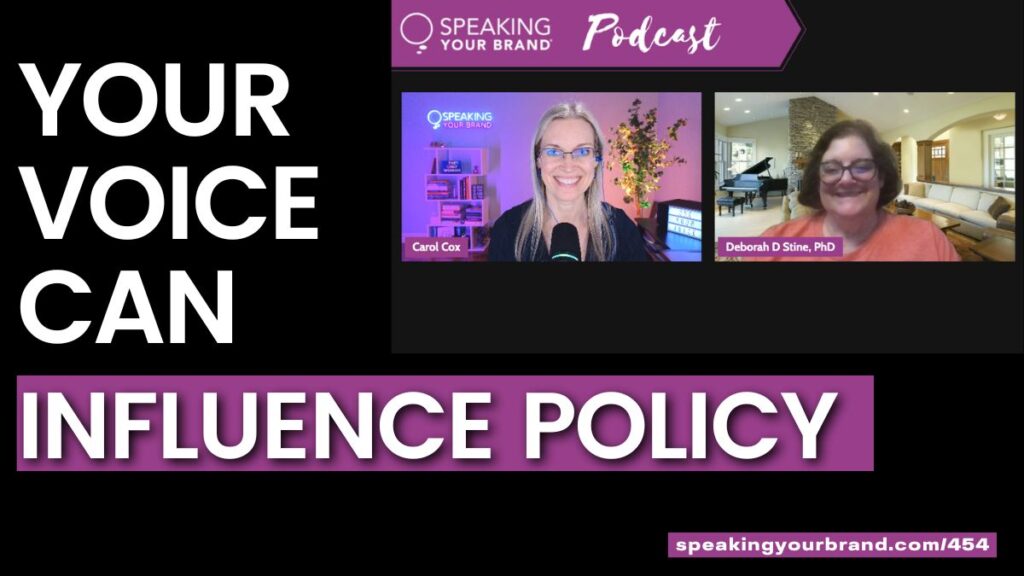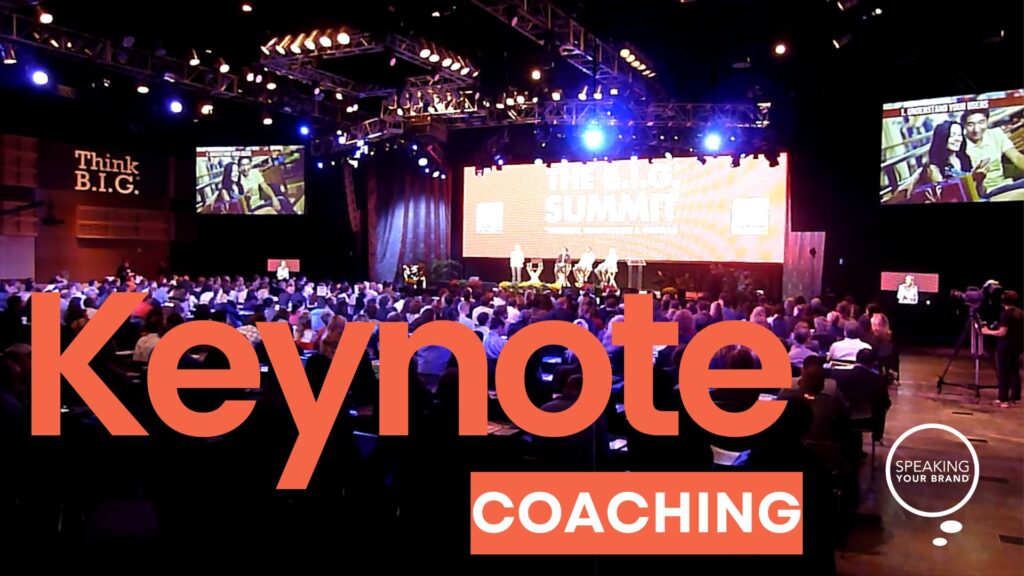Last Friday, I was in Tampa watching Hillary Clinton address an energetic crowd of 3,600 people at a rally for her campaign.
You can tell she’s done this a lot – she’s poised and in command of the stage and the audience.
Regardless of your political leanings, here are some tips you can take away from political stump speeches to make your presentations more compelling.
1. Begin with self-deprecating humor.
At her rally, the day after the GOP finished their convention, Hillary remarked that the Republicans seemed to be focused on her the entire time, which she jokingly said she found “perversely flattering”. The remark was funny and timely.
How can you get the audience to warm up to you? Poke fun at yourself, in a kind way, that will help break the ice.
For example, at some of my talks, I begin with telling a story of the time I was in dress rehearsal for a dance performance in high school and had a, ahem, wardrobe malfunction that was utterly embarrassing (but fortunately well before the day of ubiquitous cameras!).
2. Make it relevant to where you’re at.
Stump speeches tend to be the same from city to city. Once you’ve heard a candidate give theirs a few times, you can begin to recite the lines.
What’s key is to add a local touch.
Hillary thanked local officials, and she talked about her visit to Orlando earlier that day to meet with local leaders about the recent mass shooting tragedy at the Pulse nightclub.
When you’re giving your presentation, include something pertinent to the city you’re in or the company or organization you’re speaking to.
3. Use the Prod-Remind-Imagine-Challenge framework.
In a previous post, I described the Prod-Remind-Imagine-Challenge framework I created and use for my own talks and with my clients.
Hillary did something similar (not that I can take any credit!) in her speech. She prodded the audience to take this election seriously; she reminded them of our shared values as Americans; she painted a picture of a better world that we can work towards together; and she challenged the audience to do their part.
Which leads me to the final tip…
4. End with a clear call to action appropriate to the audience.
At the end of her rally, Hillary asked for volunteers to do phone banking, door knocking, and driving voters to the polls. She didn’t ask for donation checks – that wouldn’t have been appropriate for the audience, the venue, or the experience they’d just had.
What specifically do you want the audience to do when you’re done with your presentation?
Of course, it would be fantastic if everyone came running up to buy from you. But unless your offer is at a relatively low price point or this is an audience already familiar with you, most won’t be ready to buy quite yet.
Instead, lead them to the next step of working with you.
For example, I typically offer a free 30-minute strategy call to those in the audience and get a 50-80% conversion rate. It’s a win-win: they get more personalized interaction with me and I get to learn more about what they need.
If you’re interested in politics, I’m posting regularly on Twitter. Follow me at https://twitter.com/carolmorgancox.
Worth Watching
I’ll be watching the Democratic National Convention this week. As the Democratic political analyst for Orlando’s NBC station (WESH-2 News), I have to stay on top of political news (and there’s certainly no shortage of that this election cycle!).
This is a great opportunity to see the pros in action – how they weave together stories, policies, and data and how they convey that message through their speaking style.
I’ll be taking notes on the speeches from the prime-time lineup, all of whom are well-honed in their speaking craft, which will include Bernie Sanders, Elizabeth Warren, Michelle Obama, Barack Obama, Bill Clinton, Chelsea Clinton, and Hillary Clinton.
Worth Reading
There may be some of you reading this post who don’t like Hillary Clinton. I do happen to like her – I see her as a trailblazer for women in leadership and in politics, especially national-level politics which is overwhelmingly male-centric.
Simply put, we need more women in politics, to change the perception of ambitious women, by more of us actively and visibly pursuing bigger goals, sharing our stories with others so they can learn from our journeys and see themselves in ours.
In 2012, 62.3 percent of women voted, but they are less than 25% of the U.S. Senate, 20% of the U.S. House of Representatives, 12% of Governors, and 25% of State Legislators. [Source]
Women in elected office serve not only as role models, but also are more likely to advocate for policies that impact women, like paid family leave, women’s health, child care, and pay equity.
Check out this article with research about the positive impact of more women in politics.
Have you ever thought about running for local office? Comment below and let me know!
Get More Posts Like This – Sign Up for My Weekly Email Newsletter with Stories, Strategies, and Recommendations







